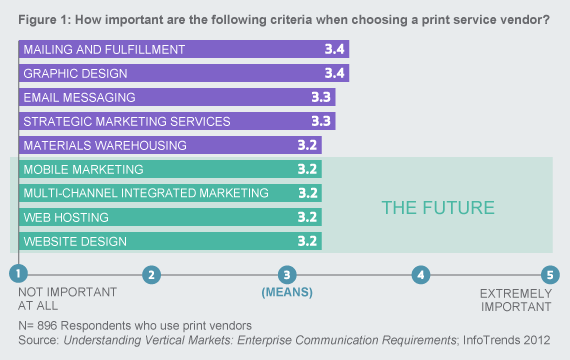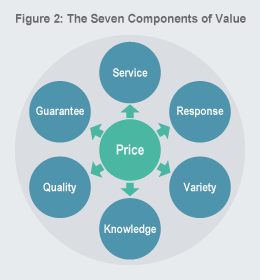What is price? A lesson in value for your services
Are your customers overly concerned with price to the point that they can’t see the value of your products, services, and solutions? Are they continually pressuring you to provide discounts? Have you informed customers that your company is delivering value-added solutions and services, but they still perceive you delivering commodity printing? If customers get too wrapped up with price, they won’t recognize the value of your products and services. A demand for discounts is based on a perception that printed products are a commodity. This perception can be quite frustrating for print service providers. The solution is to communicate about the things that set your offerings apart so that your customers can have a clear understanding of the value you deliver.
What Do Customers Want?
Let’s start with a simple question—what do your customers really want? An InfoTrends’ study entitled Understanding Vertical Markets: Enterprise Communication Requirements revealed a not-so-secret discovery about corporate marketers and executives who buy a range of printed materials and communication products—they don’t just want print. They want things like mailing and fulfillment, graphic design, email services, and strategic marketing services. Moving toward the future, mobile marketing and multi-channel communications are expected to become increasingly important as well.

 How do you price for these value-added services? You consider everything that you’re delivering. Although price is a component of value, it is only one part. There are actually seven components of value, and the trick is shifting the focus away from price and toward the other components that combine to represent the actual value delivered.
How do you price for these value-added services? You consider everything that you’re delivering. Although price is a component of value, it is only one part. There are actually seven components of value, and the trick is shifting the focus away from price and toward the other components that combine to represent the actual value delivered.
Communicating the Value of Your Offerings
You can read more about price and pricing influencers in the white paper entitled Transforming Price into Value for Your Services. For now, though, let’s talk about how to communicate value. There are actually three steps in fully communicating your value, and they are outlined below.
- Establish a New Reality Benchmark
At the end of a well-managed sales process, your job is to create a new reality that will be the best option for the client in question, given the client’s needs and the challenges associated with implementing a solution. One of the first steps in this process—which will ideally occur even before you have engaged a complete needs discovery and solution crafting process—is to ask your client how they would like things to look once the work is done.
- Translate the New Reality
Whatever the new reality is, you need to describe it to the prospect. This doesn’t involve merely throwing a bunch of numbers out there because they seem impressive—it’s about results! If a prospect selects your service, what results are reasonable to expect? Selling professional services is always a challenge because the results are often intangible, so be as specific as possible when you communicate the new reality. Make the results more tangible for the prospect by telling stories and providing examples of the results you’ve achieved.
- Paint the Picture
Now it’s time to put the new reality into a proposal. If a picture is worth a thousand words, then a chart, graph or table is worth at least that many! A simple chart outlining the value of your services will sell a prospect better than paragraph after paragraph of prose. In other cases, a table of figures might be the right approach.
The Bottom Line
When it comes to selecting a provider, the key criteria for buyers include value-added services, price, and a quick turnaround. In an environment that has seen cutbacks to corporate marketing personnel, corporations are expecting more from their service providers. They are seeking full-service partners that offer a variety of integrated marketing solutions. Today’s organizations are using internal resources for integrated marketing and this creates an opportunity for more cost-effective outsourcing. Print service providers must communicate value to their customers and provide a clear picture of the benefits that can be delivered. Price is only one of seven attributes that deliver value, and success in today’s market requires more than just offering the lowest price. So define your company’s distinct value and communicate it effectively!
